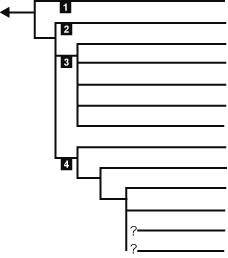| NIES-MCC | KU-MACC | Tree to Strain | Japanese | English |
| Life / Eukarya / Stramenopila / incertae sedis / Bicosoecea | |

|
Boroka |
|
1. Borokales 2. Bicoecales 3. Anoecales 4. Pseudodendromonadales |
|
| References |
|
|
Bicosoecids are unicellular heterotrophic flagellates usually feeding bacteria. They are common in aquatic environments. Some bicosoecids (e.g. Cafeteria, Caecitellus) are commonest flagellates in coastal waters. Bicosoecids are basically biflagellates with anterior flagellum with tubular mastigonemes. However, some species (e.g. Siluania) lack posterior flagellum and others (e.g. Caecitellus) have no mastigonemes on anterior flagellum. The cells are basically naked, but some species possess scales (e.g. Pseudodendromonas) or lorica (e.g. Bicosoeca). Bicosoecids are planktonic or attached to substrata by posterior flagellum or stalk. Caecitellus is a gliding flagellate on substratum. The flagellar transitional region usually lacks transitional helix. Bicosoecids engulf particles through the splitting R2 microtubules. |